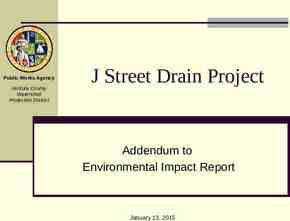Nutrition “Good nutrition is one of the keys to good health.” Food
14 Slides185.50 KB

Nutrition “Good nutrition is one of the keys to good health.” Food is energy for life. Food provides the essential materials that we need to build, repair and maintain our body. The substances in food that accomplish these functions are called nutrients. There are two main category of nutrients, macronutrients (including carbohydrates ,protein, and fats) which are the building blocks of nutrition, and micronutrients (vitamins and minerals) .

Malnutrition/Under-nutrition Malnutrition is the condition that occurs when your body does not get enough nutrients. The cause being inadequate or unbalanced diet. Which can be as a result of a problem with digestion or absorption or certain medical conditions. You may develop malnutrition if you lack a single vitamin in the diet. Malnutrition is a significant problem all over the world, especially among children, the poor, and with countries that experience natural disasters. Grenada falls within this bracket.

Grenada: Country Profile tulane.edu According to the Tulane report, In 1996, Grenada Food and Nutrition Council launched a project to monitor iron deficiency anemia. Of the 626 children under 1 year old surveyed, 55 percent were found to be iron deficient, and of the 2,667 4-5 year olds, 39 percent were considered anemic.

Over-nutrition Excess calorie intake Factor for all ages Deficient in micronutrients Risk factors – Alcohol abuse Western Dietary pattern Smokers Inappropriate restricted diet Drugs

Picture This ! Chronic non-communicable nutrition- related diseases are the main causes of disability, illness and death in the Caribbean. 60 percent of deaths in the Caribbean are the result of non-communicable diseases. Hypertension and diabetes rank #2 in leading chronic disorders – main factors for other diseases, cerebrovascular (stroke), and coronary heart disease. Obesity, diabetes and hypertension are nutrition related, preventable and manageable.

Picture This Grenada!! Health in the Americas,2007 Vol11, Countries/Grenada Leading cause of death, 2003-2005 – endocrine and metabolic diseases! Under 5 years olds seen in public clinic – 3 percent underweight or overweight! Those over 65 are considered older adults - primarily affected by chronic diseases such as diabetes, hypertension, and coronary or cardiovascular diseases and their complications.! In 2005 – it was estimated that 9% of the population was over 65 years, and this group is expected to increase by more than 10% in the next decade ! Grenada Food and Nutrition Nutritional Assessment -2005

Grenada, Carriacou and Petit Martinique Volume 1 – Main Report 2007/08 Chronic disease accounted for most of the reported health problems among the population. Diet and lifestyle changes were responsible for the increased incidence of chronic disease. 12.2 percent of males and 19.6 percent of females reported suffering from chronic lifestyle diseases, including hypertension, diabetes, obesity and cancers. 25.9 percent of those reported having a chronic lifestyle disease, belonged to the highest quintile; 6.4 percent of chronic disease sufferers belong to the poorest quintile.

What Do We Know ? Healthful diet changes bring desirable results. Studies have shown that people who adjust their menu in hopes of reducing their cholesterol, get the bonus of loosing unwanted weight. Their blood pressure drift downward, are able to control diabetes and reduce the need for medication. 2007/2008 remittances accounted for 30.7 percent of all income in households in the lowest quintile and 12.0 percent of household income overall. State funded School Feeding Program in Grenada services Preschool/kindergarten children (68.1%),Primary school children (81.6%), Secondary School children (35.4%). Pan-American Health Organization(PAHO) through the Caribbean Food and Nutrition Institute and the Caribbean Program Coordination, has been actively promoting good nutrition practices in the Caribbean region.

Nutritional management of obesity, diabetes and hypertension has been selected as a first step for which nutritional guidelines ought to be established in the primary care system. Nutrition Management is more cost effective than medication, morbidity, hospital stay, and increases mortality.

Grenada Food and Nutrition Council The task of implementing the guidelines as set forty by PAHO and CFNI is spearheaded by the Grenada Food and Nutrition Council, formed by the People’s Revolutionary Government in July 1980 as a legal body. The mission of GFNC is “To promote the nutritional well-being of all segments of the population especially the susceptible groups – women, children and the elderly.

GFNC The work of the Grenada Food and Nutrition Council is divided into three main categories: 1. Nutrition Promotion 2. Community Nutrition 3. Surveillance

Education and Nutrition The Ministry of Education is responsible for ensuring the provision of a nutritionally adequate meal to indigent children in the school system. From 1989-1996 assistance was given by the World Food Program. The hope of the program was to feed 12,000 children by 1995, giving priority to the students with single parent as head of household and very needy cases. Today, the program is evident in 91 schools throughout Grenada, Carriacou and Petit Martinique. 9,500 students are fed daily. Secondary Students who can afford pay 2.00 for their meal. Other students who can afford pay 1.00 per meal, from which .25 is returned to the program to assist with purchase and maintenance of equipment.

Limitations of Nutrition Health Programs Availability of Dieticians and Nutritionists Limited assistance from other members of health care team to provide standard level of basic nutritional care. Adequate monitoring and assessment of nutrition services provided in public as well as private settings. Limited resources and training.

Perceived Needs Implement CFNC Food Policy Dieticians, Nutritionists, Health Coaches Teaching Guides for school nutrition Programs aimed at preventing, managing targeted nutrition-related chronic disease at the primary care level Training of school and community personnel to implement programs Funds for equipment, and maintenance Organizations to adopt a school, and assist in funding School Feeding Program Assistance in recording and promoting programs that encourage a healthy lifestyle.






